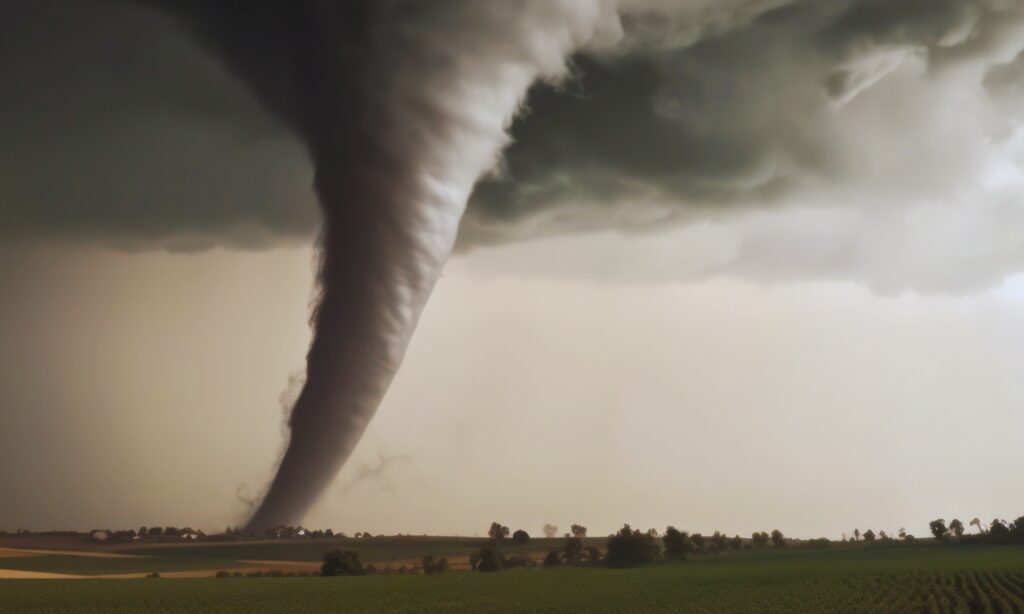Understanding the specific alerts issued by meteorologists can be the difference between life and death in severe weather. Tornadoes, with their destructive force, are of particular concern. Knowing the difference between a tornado watch and a warning is crucial for anyone who wants to stay safe during stormy weather. This blog post aims to clear up any confusion, explaining these alerts in detail, their significance, how to respond, and much more.
What is a Tornado?
A tornado is a violently rotating column of air extending from a thunderstorm to the ground. With wind speeds exceeding 200 miles per hour, tornadoes can cause widespread devastation in minutes. The United States experiences more tornadoes than any other country, making it essential for anyone, especially those living in tornado-prone areas, to understand the alerts that precede these events.
The Importance of Tornado Alerts
Tornado alerts are issued to give people enough time to take protective actions. Understanding these alerts can save lives. Meteorologists use advanced radar and other technologies to detect severe weather conditions that could spawn a tornado. They then issue either a tornado watch or a warning to inform the public. But what do these terms mean?
What is a Tornado Watch?
A tornado watch means conditions are favorable for developing tornadoes within the watch area. It does not mean that a tornado has been spotted. Instead, it’s a heads-up to be prepared and stay alert. A tornado watch is typically issued for several hours and covers a large geographic area.
Stay Informed During a Tornado Watch
It’s crucial to stay informed during a tornado watch. Monitor weather updates through reliable sources such as the National Weather Service (NWS) or local news channels. Smartphone weather apps can also provide real-time updates.
Prepare Your Safe Space
Knowing where to go in case a tornado forms is essential. Identify a safe space in your home, such as a basement or an interior room on the lowest floor with no windows. Make sure everyone in your household knows where to go when a warning is issued.
Assemble an Emergency Kit
Having an emergency kit ready can make a significant difference. Include items like water, non-perishable food, flashlights, batteries, a first-aid kit, and essential documents. Make sure your kit is in your designated safe space.
What is a Tornado Warning?
A tornado warning means that a tornado has been sighted or indicated by weather radar. This is a more urgent alert and requires immediate action. Tornado warnings are typically for smaller areas, such as parts of counties or specific towns, and generally last less than an hour.
Take Immediate Action During a Tornado Warning
When a tornado warning is issued, you need to act fast. Go to your pre-identified safe space immediately. Please do not wait to see the tornado; it might be too late by then.
Protect Yourself
While in your safe space, protect yourself from flying debris. Use a mattress, heavy blankets, or even a helmet to shield your head. Get under something sturdy like a heavy table.
Stay Put Until the All-Clear
Stay in your safe space until the warning has expired or authorities have given the all-clear. Tornadoes can change direction and intensity quickly, so it’s crucial to remain sheltered until the danger has passed.
Community Resources and Support
Local communities often have resources to help residents prepare for tornadoes.
Local Emergency Management Agencies
These agencies provide information on how to prepare for tornadoes and where to seek shelter during a storm.
Community Shelters
Many communities have designated shelters for residents who cannot shelter in place. Know where these shelters are located before a tornado strikes.
Online Resources
Websites like the National Weather Service offer valuable information on tornado preparedness and response. Utilize these resources to stay informed and prepared.
Conclusion
Understanding the difference between a tornado watch and a warning can be life-saving. A tornado watch calls for preparation, while a warning means taking immediate action. By staying informed, having a plan, and knowing how to respond, you can protect yourself and your loved ones during severe weather.
For more content like this, please visit our blog.

